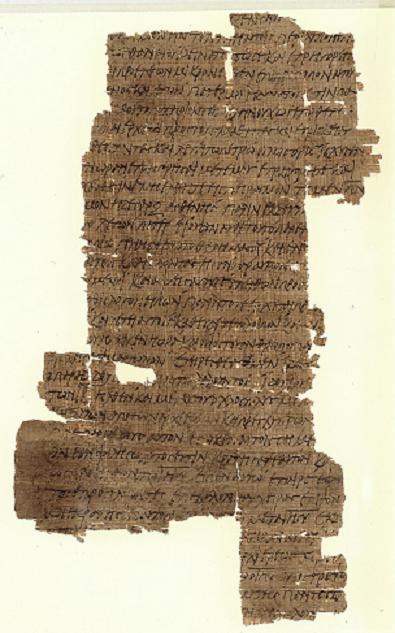| Change to Book/Chapter View | Previous Manuscript: none |
|
|
Translation process is ongoing. For current status see details |
|
|

Papyrus 1 Discovered: Oxyrhynchus, Egypt in 1896 Location: University of Pennsylvania Contents: Matthew 1:1-9, 12-20, 23 Notes:
Matthew 1 1 The book of the genealogy of Jesus Christ, the son of David, the son of Abraham. 2 Abraham became the father of Isaac.
Isaac became the father of Jacob. Jacob
became the father of Judah and his brothers. 3 Judah
became the father of Perez and Zerah[1] by Tamar. Perez became the
father of Hezron. Hezron became the father
of Ram. 4 Ram became the father of Amminadab.
Amminadab became
the father of Nahshon. Nahshon became the
father of Salmon. 5 Salmon
became the father of Boaz by Rahab. Boaz became
the father of Obed by Ruth. Obed became the father of Jesse. 6 Jesse became the father
of King David. David [..] 12 After the exile to Babylon, Jechoniah became the father of Shealtiel. Shealtiel became the father of Zerubbabel. [..] 14 Azor became the father of Zadok. Zadok became the father of Achim. Achim became the father of Eliud. 15 Eliud became the father of Eleazar. Eleazar became the father of Matthan. Matthan became the father of Jacob. 16 Jacob became the father of Joseph, the husband of Mary, from whom was born Jesus, who is called Christ. 17 So all 18 Now the birth of Jesus Christ was like this: After his mother, Mary, was engaged to Joseph, before they came together, she was found pregnant by the Holy Spirit. 19 Joseph, her husband, being a righteous man, and not willing to make her a public example, intended to put her away secretly. 20 But when he thought about these things, behold, an angel of the Lord appeared to him in a dream, saying, “Joseph, son of David, don’t be afraid to take to yourself Mary as your wife, for that which is conceived in her is of the Holy Spirit. [..] 23 “Behold, the virgin shall be with child, and shall give birth to a son. They shall call his name Immanuel,” which is, being interpreted, “God with us.”
|
How to read these pages: • The
translation to the left is based on the World English Bible. Words in regular
black font are words in the manuscript matching the Majority Text for that
passage. • Words
in italics cannot be seen in the manuscript, since the manuscript is
fragmentary. These words are supplied for readability by the World English
Bible translation. • Words
present in the manuscript but with some letters unreadable or missing are in blue
like this: blue. One Greek word often is
translated into multiple English words, and when this occurs, all the English
words are in blue. • Words
present in the manuscript but with spelling or trivial word order differences that do not affect the
meaning are in green like this: green. • If
the manuscript is different from the Majority Text, words in the Majority
Text that are missing from the text of the manuscript are marked through in red
like this: • If the manuscript is different from the Majority Text, words in the manuscript that are not in the Majority Text are underlined in red like this: new words.If the manuscript differs from the Majority Text yet matches another well-known text, this is noted in the footnotes.
|
